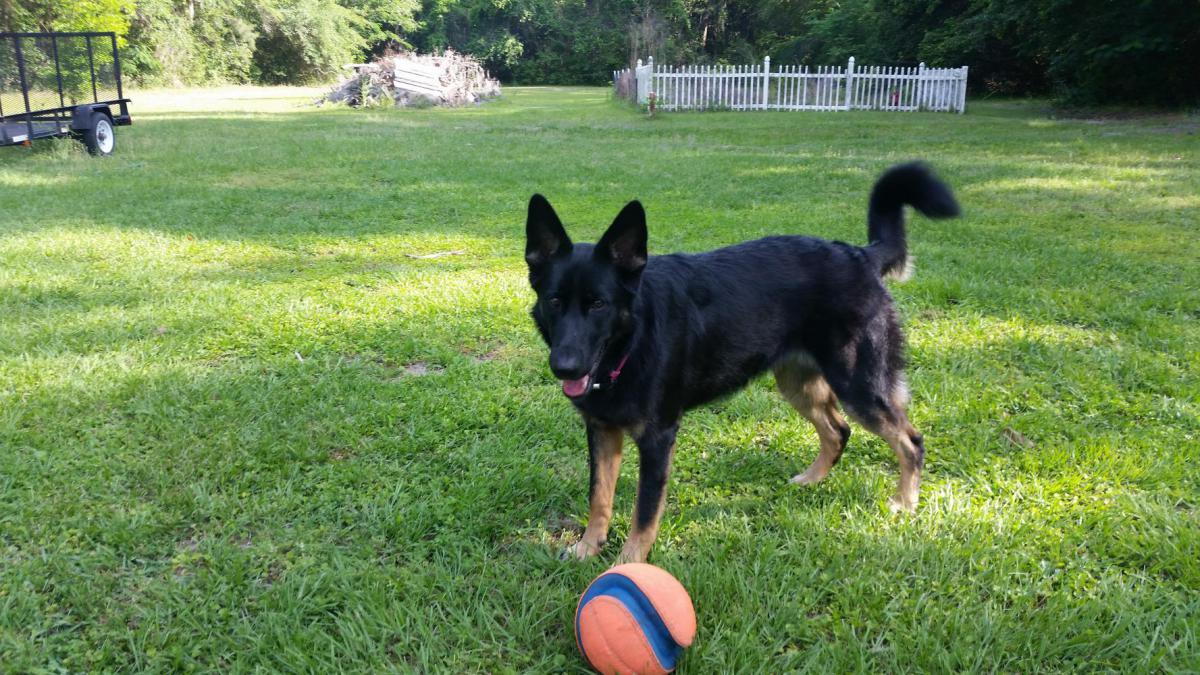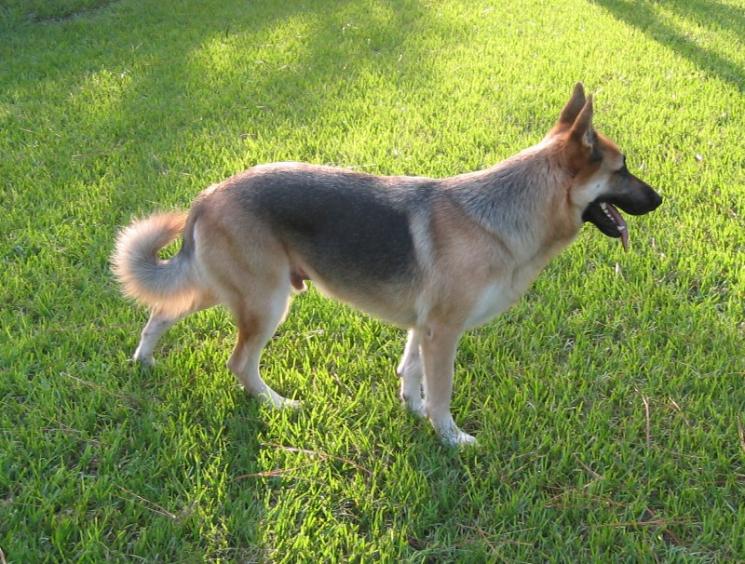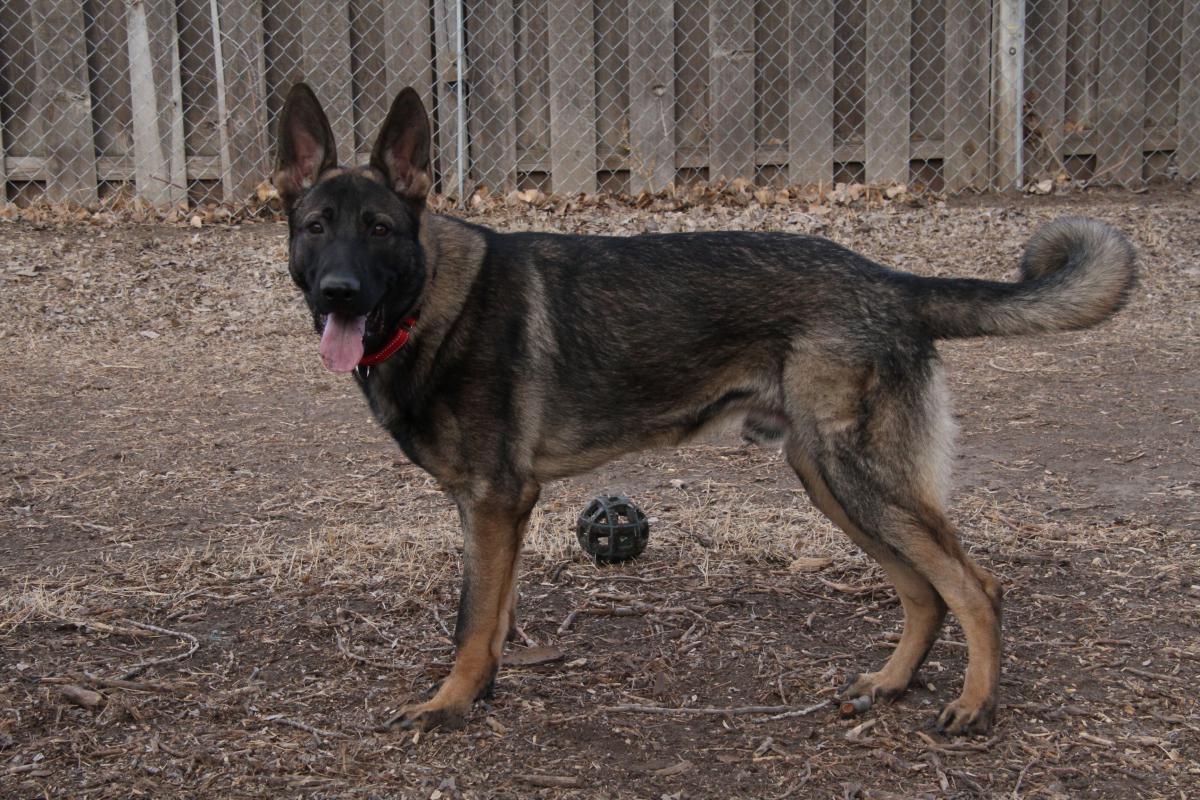If you have a German Shepherd as a pet, you should know that it may have some problems with its tail. Dogs usually use their tails to communicate with each other, and some movements have key meanings. You must know exactly if your GSD communicates with you or has a queue problem.
Find out the behaviors and meanings of the German Shepherd’s tail for you to detect now. Find out why German Shepherds chase their tails and why that area of their leather curves. You should know what the tail diseases in your German Shepherd and their possible treatments are.
German Shepherd Tail Behaviors And Meanings
Contents

According to some veterinary experts in the world, when a German shepherd wags his tail, he is trying to tell you something. You can learn some behaviors and meanings from your pet’s tail, such as:
- If your German Shepherd’s tail moves down and its tip is curved, it means that your pet trusts you.
- If you notice that your GSD tail is hanging horizontally downwards, it means that it is calm observing everything around it.
- When the tail is straight or moving up, it means that your German Shepherd wants to start a fight.
- If your pet’s tail is between its legs, it is afraid or eager to see you.
- When your pet’s tail is down but not hanging, this means it is resting.
- If your GSD has its tail down, it means that it is upset or happy with you.
- When the German Shepherd wags his tail slowly in both directions, it means that he is confused.
- When the GSD is rapidly wagging its tail both ways, it means that it is happy to see you.
- If you notice that your pet is wagging his tail only to the right, it may mean that he is eager to play.
- When the German Shepherd wags his tail only to the left, it can mean that he is nervous or upset.
Why Do German Shepherds Chase Your Tail?
If you wonder why German Shepherds chase their tails, you should know that this is common in the breed. GSDs are usually very playful if you have puppies, and one of their favorite games is chasing their tail. When a German Shepherd can this act means several things such as:
- Your GSD will chase his tail because he is too bored, wants to go out and play with you, or may even beg for physical activity. When you notice that your dog is eager to run, jump, and other activities, please indulge him by taking him to the party.
- A German Shepherd can also chase his tail for fun, even though he recently went out to the park with you. From a puppy, the dog will chase its tail, being very normal so that you do not worry.
Why Does A German Shepherd’s Tail Curl?

The curve in your German Shepherd’s tail doesn’t mean a bad thing for you to worry about on your pet. This problem is genetic that affects many dogs, so it is quite common. You can do the same physical activities with your curved-tailed GSD as on the straight-tailed one.
If you want to have surgery that straightens your GSD’s tail, you may lose your money in the process. You can straighten your pet’s tail, but it will become curved again over the months. As this is a genetic problem that affects the tail, there is no viable solution that you can do with your pet.
German Shepherd Tail Diseases And Possible Treatments
You have to know what are the diseases in the German Shepherd’s tail and their possible treatments when having it:
-
Limber tail syndrome
This cold or broken tail problem is very common in GSDs used for hunting or extreme physical activities. This syndrome originates when your pet spends a lot of time in cold water, damaging her tail muscles. Your German Shepherd will lose mobility in his tail, giving him trouble communicating with other dogs or with you.
The symptoms you may see in the limber’s tail are cramps, swelling throughout the area, and excruciating pains. Your dog may go through some sad and sore days, so you will have to take him to a vet.
The possible treatment for limber tail syndrome is to see a veterinarian for pain relievers. This problem can last a few days in your dog, being very painful until he finally regains the mobility of his tail.
-
Skin infection
Your GSD can also suffer from a skin infection at the tail level, causing itching and hair loss. You can see how your pet will bite its tail to reduce that annoying itch. If your dog is constantly biting his tail, he may develop an infection that leads to other problems.
This skin infection is itching, shedding, small bumps, and tail irritation. You may also notice your dog licking its tail to heal, but this will only worsen the infection.
To treat this infection in your dog, you have to go to the vet to indicate the correct antibiotics. You don’t have to medicate your dog on your own because you could accelerate the infection and cause it to lose its tail.
-
Anal furunculosis
This problem in the tail and anus is genetic among German Shepherds you should treat in your pet when you detect it. This is a chronic disease that occurs on the skin under the tail and in the anus of your dog. Anal furunculosis occurs when your German Shepherd’s immune system is not working well.
This problem can be treated in your pet if you go quickly to the vet for the best medications. You can also try adopting a GSD who does not have these parental genetics.
You can also see other tail diseases in your German Shepherd, such as:
-
Tail bite infection
When your GSD is used to playing with other dogs, some serious fights may occur. If your pet has been bitten on its tail and a wound has been created, you should treat it immediately. Dog bite infections in your German Shepherd are very common and dangerous if left untreated.
You have to clean the bite with water, then with alcohol, and finally, cover it with gauze. It is good that you see a veterinarian if the bite on your German Shepherd has become infected.
-
Tail injuries
Your German Shepherd can also be injured by wagging his tail and hitting it with a solid object at home. These injuries can be treated quickly when you detect the cut and disinfect it. At all times, you have to go to the vet to treat these problems that can occur in your GSD tail.




